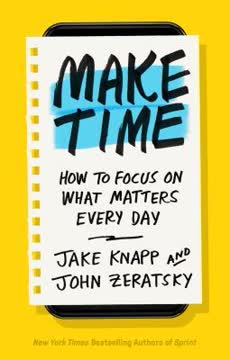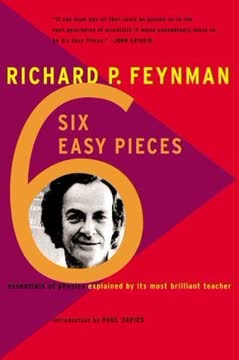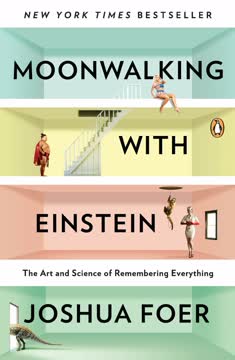Key Takeaways
1. Memory is a skill that can be trained and improved
There is no such thing as a poor memory. There is only trained or untrained memory.
Memory is malleable. Like a muscle, memory can be strengthened through consistent practice and proper techniques. The human brain has an immense capacity for storing information, with estimates suggesting it can hold up to 2.5 petabytes of data. This potential often goes untapped due to ineffective learning methods.
Common myths debunked:
- Memory does not have a finite capacity that can be "filled up"
- Age does not necessarily lead to memory decline
- Memory pills and tonics have limited effectiveness compared to training
The key to improving memory lies in understanding how the brain processes and stores information. By leveraging the brain's natural tendencies and applying specific techniques, anyone can dramatically enhance their ability to remember and recall information.
2. Association, imagination, and visualization are key to memory enhancement
Imagining a thing or an event once is equivalent to hearing about it twenty times.
The AIR principle forms the foundation of effective memory techniques:
- Association: Linking new information with existing knowledge
- Imagination: Creating vivid mental images
- Ridiculous thinking: Making associations unusual or absurd
The human brain is wired to remember images more easily than abstract concepts or words. By converting information into vivid, multi-sensory mental pictures, we can significantly improve retention and recall. The more outlandish or emotionally charged the image, the more memorable it becomes.
To create strong associations:
- Use all senses in your visualization
- Exaggerate proportions and quantities
- Include yourself in the mental image
- Make the scene outstanding or unusual
- Incorporate colors and actions
3. The chain method links information sequentially for better recall
Associations are like pearls in a necklace.
Sequential linking. The chain method involves creating a story or sequence of vivid mental images that connect pieces of information. Each item is linked to the next, forming a chain of associations that can be easily recalled in order.
Applications of the chain method:
- Memorizing shopping lists
- Remembering to-do lists
- Learning sequences of events or processes
- Recalling points for speeches or presentations
Key to effective chain method use:
- Link only two items at a time
- Create clear, vivid mental images for each link
- Make associations as ridiculous or unusual as possible
- Practice recalling the chain both forwards and backwards
4. Personal Nick Name (PNN) method helps memorize abstract concepts
When we hear a difficult or long name of a person, we usually give it a short (nick) name so that it becomes easy to pronounce.
Simplify the complex. The PNN method involves creating a familiar, easy-to-visualize nickname for abstract or unfamiliar concepts. This technique is particularly useful for memorizing:
- Technical terms
- Foreign language vocabulary
- Names of people and places
- Scientific terminology
Steps to use the PNN method:
- Break down the unfamiliar word into familiar-sounding components
- Create a vivid mental image based on these familiar sounds
- Associate the mental image with the meaning or context of the original word
Example: "Exorbitant" becomes "Ex-orbit-ant" - visualize an ant moving out of its orbit around Earth.
5. The hide-and-seek method creates mental pegs for information storage
The beauty of this method is that you can have unlimited hiding places using which you can memorize unlimited amount of information.
Mental filing system. The hide-and-seek method, also known as the loci method or memory palace technique, involves associating information with specific locations in a familiar setting. This creates a mental framework for storing and retrieving large amounts of information.
Steps to use the hide-and-seek method:
- Choose a familiar location or route (e.g., your home, office, or daily commute)
- Identify distinct, sequential stops or landmarks within that location
- Associate each piece of information with a specific stop
- To recall, mentally walk through the location, retrieving information at each stop
Benefits:
- Allows for memorization of long lists or sequences
- Information can be recalled in any order
- Missing one item doesn't disrupt the entire sequence
- Can be used for speeches, presentations, or memorizing academic material
6. Mnemonics and acronyms simplify complex information retention
Mnemonics are methods, devices, or any learning techniques that helps in retention of information.
Creative memory aids. Mnemonics are tools that help encode information in a more memorable format. They can take various forms, including:
- Rhymes
- Acronyms
- Acrostics
- Music mnemonics
- Number phrase techniques
- Image mnemonics
Examples:
- "Roy G. Biv" for colors of the rainbow
- "Every Good Boy Does Fine" for musical notes on the treble clef
- "My Very Educated Mother Just Served Us Noodles" for planet order
These techniques work by:
- Chunking information into more manageable units
- Creating patterns or associations that are easier to remember
- Engaging multiple senses and learning styles
- Adding an element of fun or creativity to the learning process
7. Mind mapping organizes information visually for enhanced learning
Mind maps can be more effective than other brainstorming and linear note-taking methods for a number of reasons.
Visual organization. Mind mapping is a graphical technique that mirrors the way the brain naturally processes information. It combines words, colors, and images to create a visual representation of a topic or concept.
Key elements of effective mind maps:
- Central image representing the main topic
- Branches radiating from the center with key subtopics
- Keywords and images on each branch
- Use of colors to group related ideas
- Incorporation of symbols and visual elements
Benefits of mind mapping:
- Provides an overview of a large subject
- Combines left and right brain thinking
- Encourages creative connections between ideas
- Makes note-taking more engaging and memorable
- Facilitates quick review and recall of information
8. Phonetic peg system converts numbers into memorable words
To memorize long numbers, we use the Advanced Peg system or the Phonetic Peg system.
Numbers to words. The phonetic peg system assigns consonant sounds to each digit (0-9), allowing numbers to be converted into words or phrases. This technique is particularly useful for memorizing:
- Phone numbers
- Dates and historical events
- Mathematical constants
- PIN codes and passwords
Phonetic code example:
1 = t, d
2 = n
3 = m
4 = r
5 = l
6 = j, ch, sh
7 = k, g
8 = f, v
9 = p, b
0 = s, z
To use the system:
- Convert numbers to consonant sounds
- Add vowels to create words or phrases
- Create vivid mental images based on the resulting words
Example: 314 (pi) becomes "mat+tar" - visualize a doormat made of tar.
9. Effective study skills maximize learning and retention
Any skill which boosts a person's ability to study and pass exams with excellent scores can be termed a study skill.
Optimize learning. Effective study skills go beyond memorization techniques, encompassing strategies for time management, note-taking, and exam preparation.
Key study skills:
- SMART goal setting (Specific, Measurable, Achievable, Relevant, Timed)
- PQRST approach (Preview, Question, Read, Summarize, Test)
- Mind mapping for note-taking and summarization
- Spaced repetition for long-term retention
- Active recall through self-testing
Additional tips:
- Create a dedicated study environment
- Use the Pomodoro Technique for focused work sessions
- Teach concepts to others to reinforce understanding
- Utilize mnemonic devices for challenging material
- Practice with past exam papers or mock tests
10. Memory techniques can be applied to various academic subjects
Memory techniques play a very important role in changing the perspective of a student towards boring and difficult subjects.
Cross-disciplinary application. Memory techniques can be adapted to various academic subjects, making learning more engaging and effective across disciplines.
Examples of subject-specific applications:
- Chemistry: Memorizing the periodic table using phonetic pegs
- History: Using the hide-and-seek method for remembering chronological events
- Biology: Creating acronyms for taxonomic classifications
- Mathematics: Visualizing formulas using the chain method
- Languages: Applying the PNN method to vocabulary acquisition
Benefits of using memory techniques in academics:
- Increases engagement with the material
- Improves long-term retention of key concepts
- Reduces exam anxiety by boosting confidence in recall
- Encourages creative thinking and problem-solving
- Makes learning more enjoyable and less monotonous
Last updated:
FAQ
What's "How to Memorize Anything" about?
- Comprehensive Memory Guide: "How to Memorize Anything" by Aditi Singhal and Sudhir Singhal is a detailed guide on improving memory using various techniques and methods.
- Structured Approach: The book is divided into sections that cover the basics of memory, memory techniques, applications, and specific sections for students.
- Practical Techniques: It provides practical memory techniques like the Chain Method, Peg System, and Mind Maps to help readers memorize information effectively.
- Real-Life Applications: The book includes applications for everyday tasks, academic subjects, and even tricks to amaze friends, making it versatile for different needs.
Why should I read "How to Memorize Anything"?
- Enhance Memory Skills: The book offers proven techniques to enhance memory skills, which can be beneficial in both personal and professional life.
- Wide Applicability: It covers a range of topics from memorizing shopping lists to complex academic subjects, making it useful for students, professionals, and homemakers.
- Expert Insights: Authored by renowned memory trainers, the book provides insights and methods that have been tested and proven effective.
- Boost Confidence: By mastering memory techniques, readers can boost their confidence in handling information and improve their cognitive abilities.
What are the key takeaways of "How to Memorize Anything"?
- Memory Techniques: Learn various memory techniques such as the Chain Method, Peg System, and Mind Maps to improve recall.
- Practical Applications: Discover how to apply these techniques to everyday tasks, academic subjects, and professional scenarios.
- Understanding Memory: Gain a deeper understanding of how memory works and how to harness its potential.
- Lifestyle Tips: The book also provides tips on improving concentration and lifestyle changes to support better memory.
How does the Chain Method work in "How to Memorize Anything"?
- Sequential Linking: The Chain Method involves linking items in a list by creating a story or sequence, making it easier to recall.
- Visualization: It emphasizes the use of vivid and ridiculous imagery to make associations memorable.
- Practical Use: This method is particularly useful for memorizing lists, such as shopping lists or points in a presentation.
- Step-by-Step Process: The book provides a step-by-step guide on how to create these associations effectively.
What is the Peg System in "How to Memorize Anything"?
- Number Association: The Peg System involves associating numbers with specific images or words to help memorize sequences.
- Rhyme and Shape Methods: It includes techniques like the Number Rhyme Method and Number Shape Method to create memorable associations.
- Versatile Applications: This system can be used for memorizing lists, dates, and even complex numerical data.
- Enhanced Recall: By converting abstract numbers into tangible images, the Peg System enhances recall and reduces confusion.
How are Mind Maps used in "How to Memorize Anything"?
- Visual Note-Taking: Mind Maps are a visual way of taking notes that mimic the brain's natural way of processing information.
- Central Idea Expansion: They start with a central idea and expand outward with branches representing subtopics and details.
- Creative and Colorful: The use of colors and images makes Mind Maps engaging and easier to remember.
- Organizational Tool: They are useful for organizing thoughts, planning events, and summarizing information for better understanding and recall.
What is the Personal Nick Name (PNN) Method in "How to Memorize Anything"?
- Abstract Word Visualization: The PNN Method involves creating a nickname for difficult or abstract words to make them easier to visualize.
- Personalized Associations: It allows for personalized associations, making it adaptable to individual preferences and experiences.
- Wide Range of Uses: This method is effective for memorizing foreign language words, scientific terms, and complex vocabulary.
- Enhanced Memory: By converting abstract concepts into familiar images, the PNN Method enhances memory retention and recall.
How can "How to Memorize Anything" help students?
- Subject-Specific Techniques: The book provides memory techniques tailored for subjects like Chemistry, History, and Biology.
- Exam Preparation: It offers strategies for memorizing formulas, dates, and long answers, aiding in exam preparation.
- Smart Study Skills: Students can learn effective study habits, goal setting, and revision techniques to optimize their learning.
- Confidence Building: By mastering these techniques, students can improve their academic performance and build confidence in their abilities.
What are the best quotes from "How to Memorize Anything" and what do they mean?
- "Reading this book is smart. Putting what you learn into practice is even smarter." This quote emphasizes the importance of applying the techniques learned in the book to truly benefit from them.
- "Our brain has a limited capacity for words, but an unlimited capacity for images or pictures." It highlights the power of visualization in memory retention, encouraging readers to use imagery for better recall.
- "A good memory is a powerful asset in everyone’s life." This quote underscores the value of a strong memory in achieving success across various aspects of life.
How does "How to Memorize Anything" address common memory myths?
- Memory Capacity: The book debunks the myth that memory has a limited capacity, explaining that it can be expanded with the right techniques.
- Age and Memory: It challenges the belief that memory declines with age, showing that it can be maintained and improved with practice.
- Pills and Memory: The authors clarify that while supplements can support brain health, they are not a substitute for memory training.
- Innate Memory Ability: The book argues that memory is not fixed at birth and can be developed through training and practice.
How can "How to Memorize Anything" improve concentration?
- Attention Training: The book provides exercises and techniques to improve attention, a key component of memory.
- Lifestyle Changes: It suggests lifestyle changes, such as a healthy diet and regular exercise, to support better concentration.
- Meditation Benefits: Meditation is recommended as a way to enhance focus and reduce distractions.
- Avoiding Multitasking: The book advises against multitasking, promoting single-task focus for improved concentration and memory.
What lifestyle tips does "How to Memorize Anything" offer for better memory?
- Healthy Diet: The book emphasizes the importance of a brain-healthy diet rich in antioxidants and essential nutrients.
- Regular Exercise: Physical activity is recommended to boost brain function and improve memory.
- Adequate Sleep: Ensuring sufficient sleep is highlighted as crucial for memory consolidation and cognitive performance.
- Stress Management: Techniques for managing stress, such as meditation and relaxation exercises, are provided to support mental clarity and memory.
Review Summary
How to Memorize Anything receives mostly positive reviews, with an average rating of 4.06/5. Readers appreciate its practical techniques for memory improvement, including the peg system, mind mapping, and mnemonics. Many find it useful for students and beginners. Some criticize the book for typos and unsupported claims. Readers note its effectiveness in teaching memory techniques, though some find certain sections less helpful. The book is praised for its detailed explanations and practical examples, making it valuable for those seeking to enhance their memory skills.
Similar Books







Download PDF
Download EPUB
.epub digital book format is ideal for reading ebooks on phones, tablets, and e-readers.




